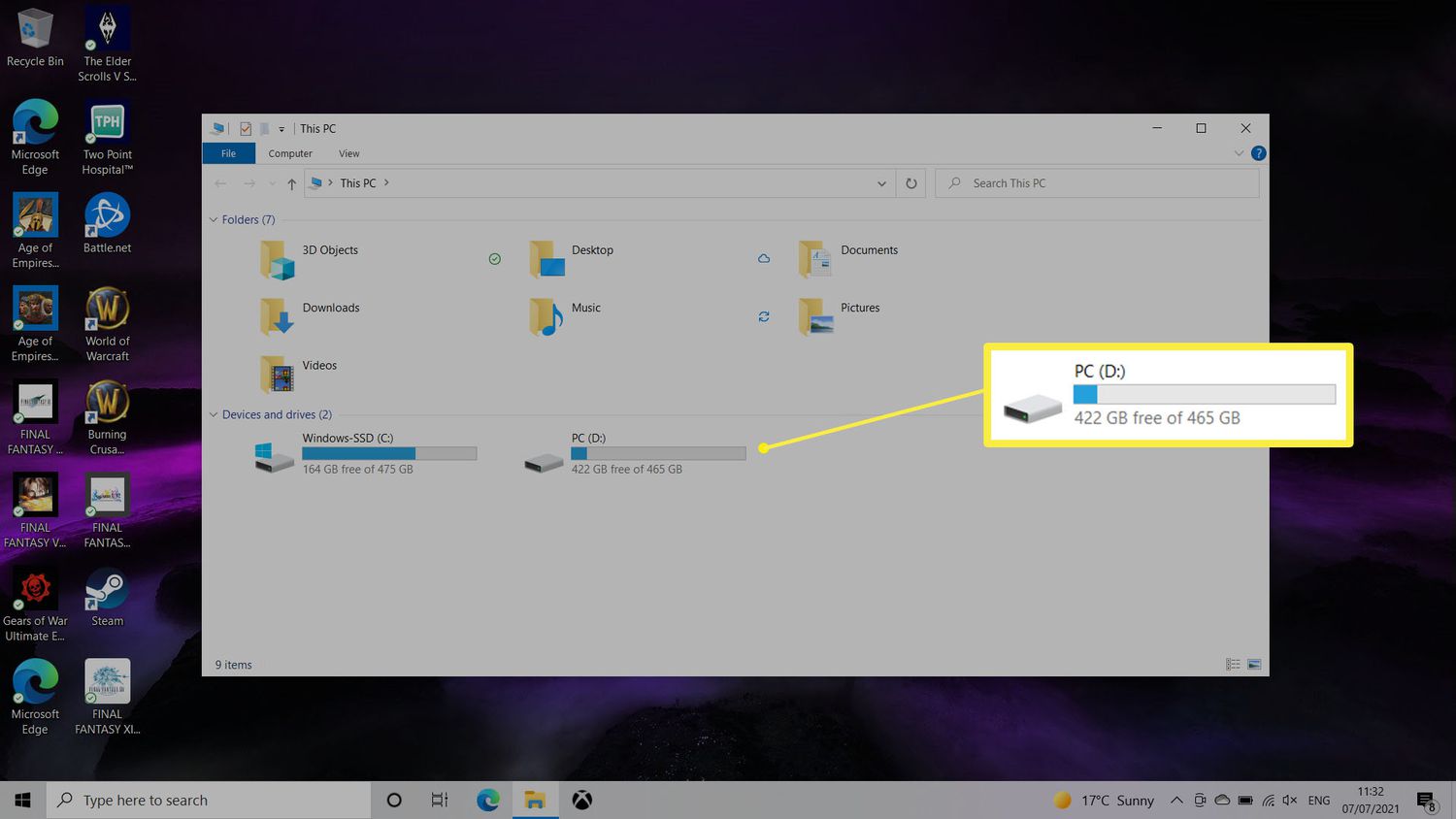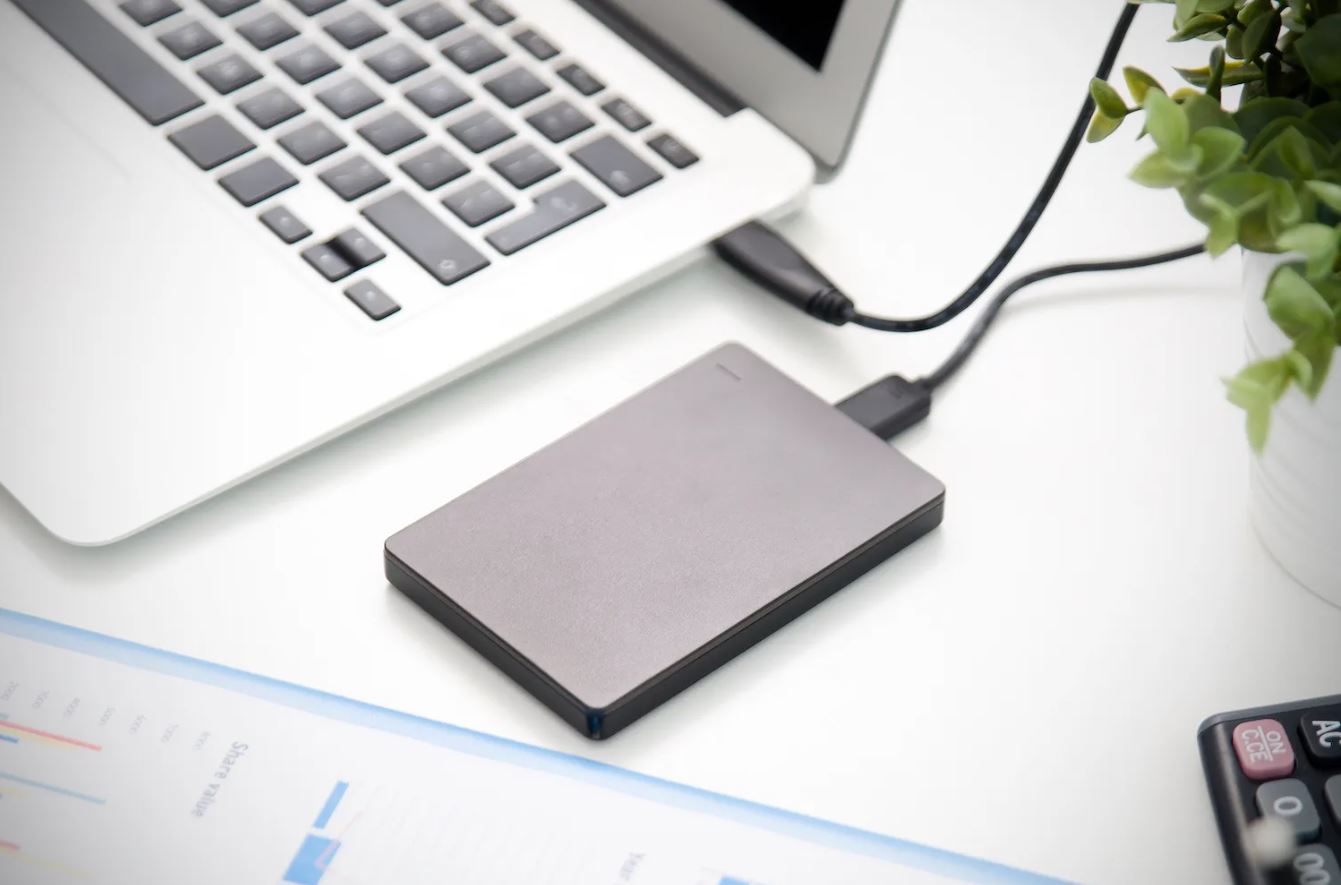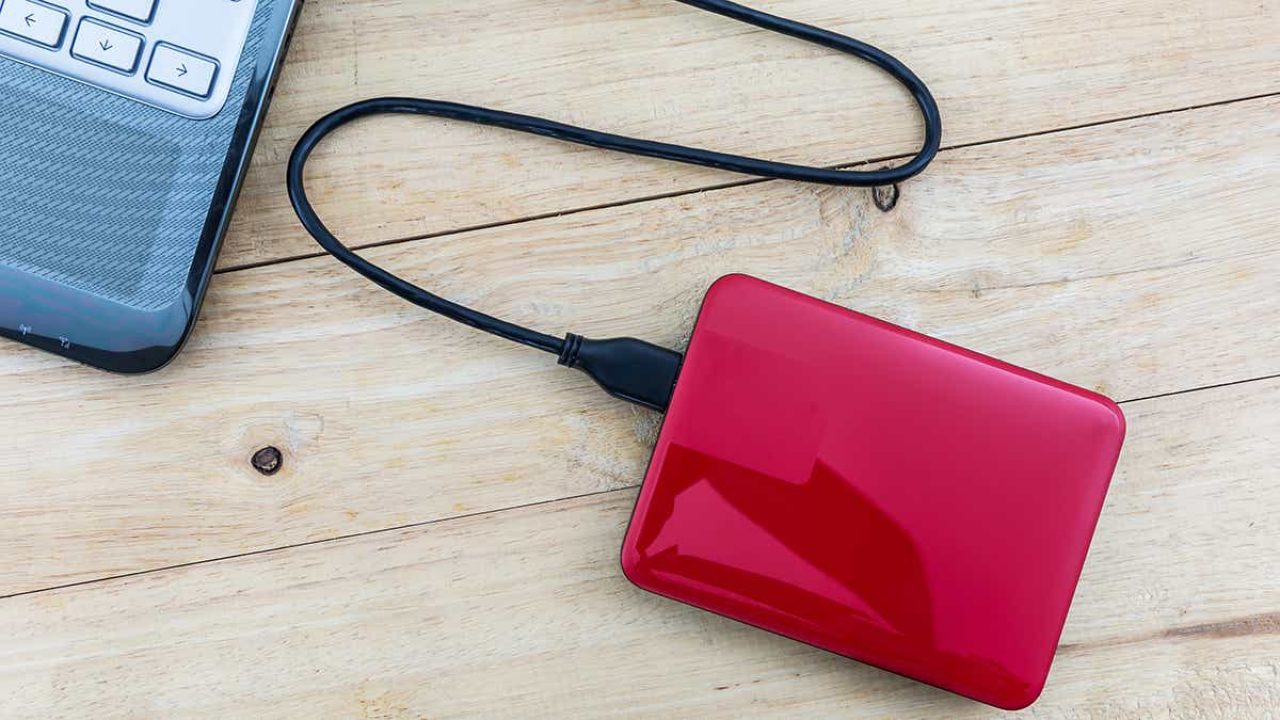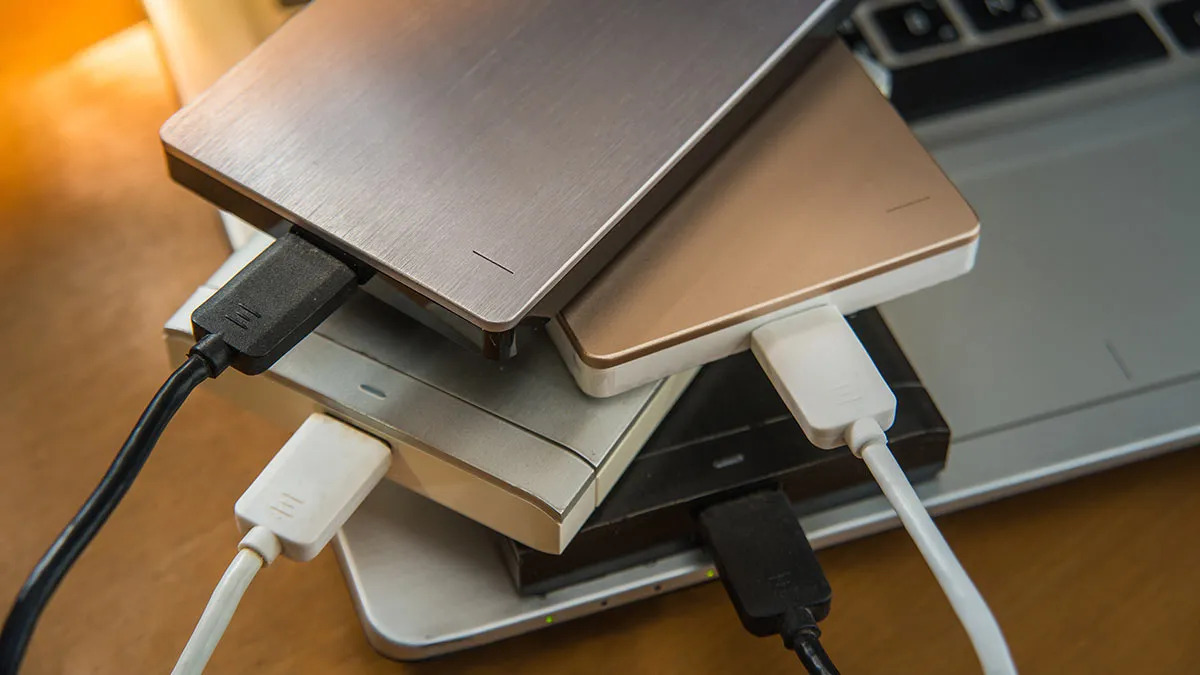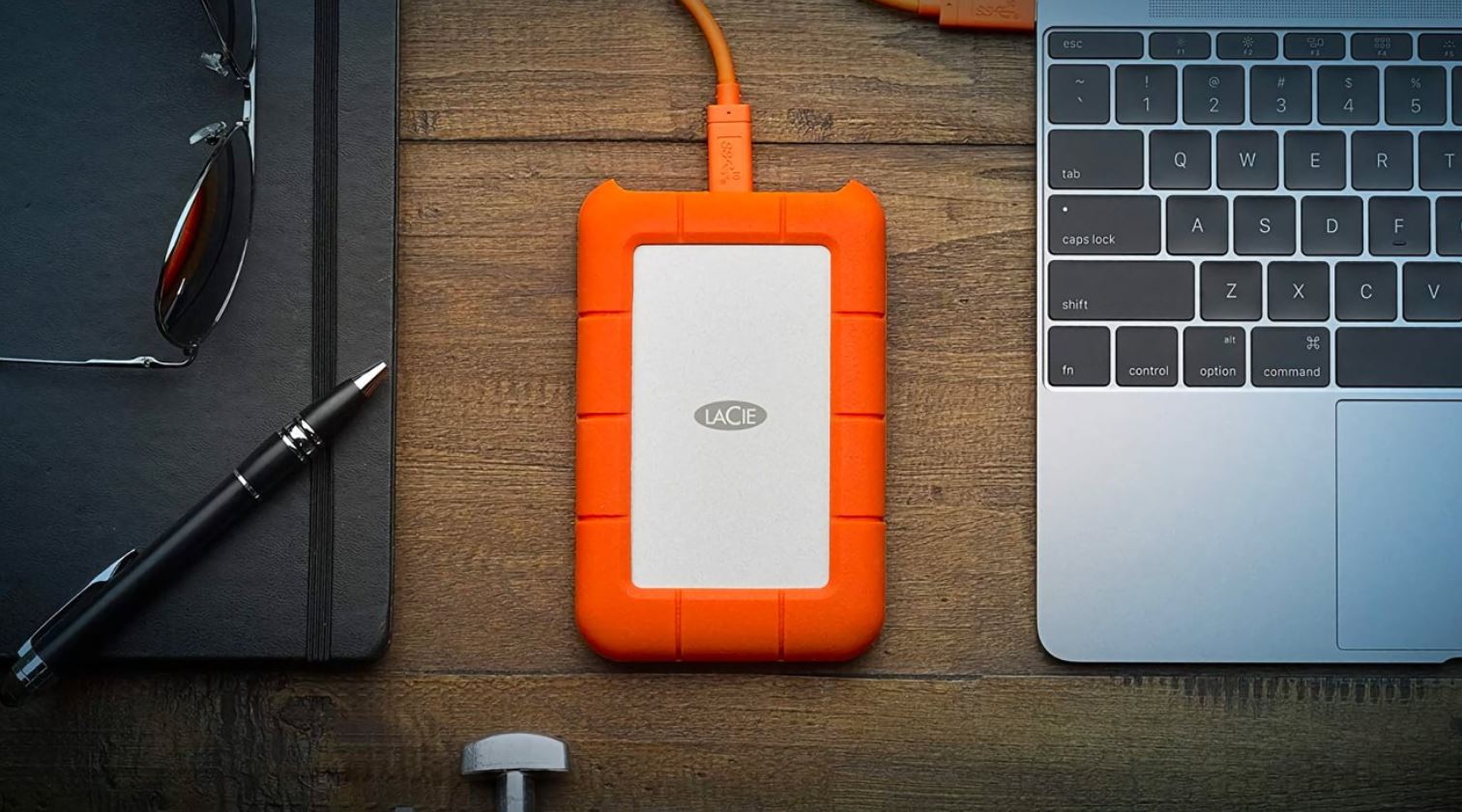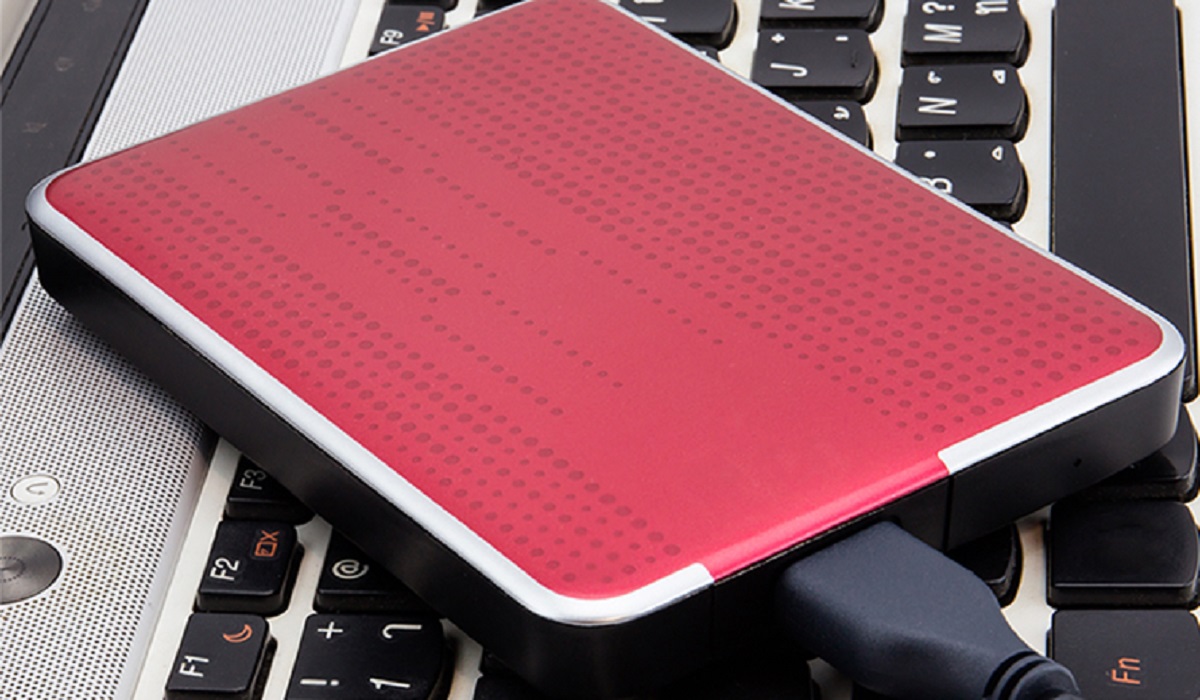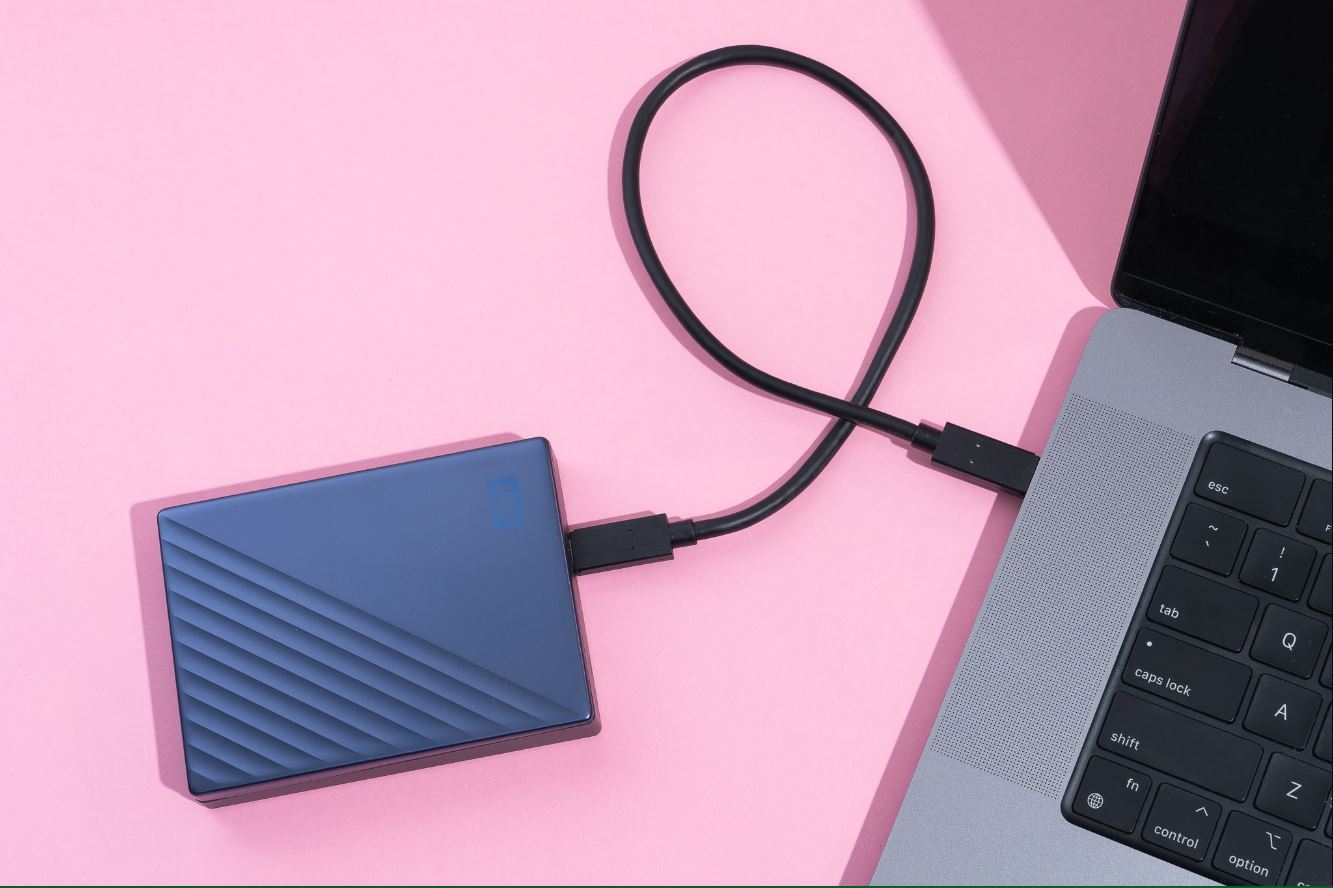Introduction
Having an external hard drive is a convenient way to expand your storage space and keep your files secure. Whether you want to store large media files, create backups, or transfer data between devices, an external hard drive can be a valuable asset. However, sometimes locating the external hard drive on your PC can be a bit tricky, especially if you’re not familiar with the process.
In this article, we will guide you through the various methods to find your external hard drive on your PC. We will walk you through the steps to ensure that your hardware connections are properly set up and provide instructions on using different tools, such as Disk Management, File Explorer, and Device Manager, to help you locate the external hard drive. Additionally, we will offer troubleshooting tips to help you overcome any potential issues you might encounter along the way.
Whether you are using a Windows 10, 8, or 7 operating system, this guide will cater to your needs and ensure that you can find your external hard drive easily and efficiently.
Checking Hardware Connections
Before diving into software-based solutions, it’s important to ensure that your external hard drive is properly connected to your PC. A loose or faulty connection could be the reason why your PC is not recognizing the external hard drive. Follow these steps to check your hardware connections:
- Start by inspecting the USB cable connecting the external hard drive to your PC. Make sure it is securely plugged into the USB port on your computer and the external hard drive itself.
- If you are using a desktop PC, try plugging the USB cable into a different USB port. Sometimes, a malfunctioning port can cause connectivity issues.
- For laptops, check if there are any power-saving settings that may be turning off the USB ports. Adjusting these settings may help your laptop recognize the external hard drive.
- If your external hard drive requires external power, ensure that it is properly connected to a power source and turned on.
- If possible, try using a different USB cable or an alternative USB port on your PC. This can help determine if the issue lies with the cable or port.
- Consider testing the external hard drive on a different computer to rule out any hardware-related problems.
By carefully examining and resolving any hardware connection issues, you can eliminate any potential physical problems that may prevent your PC from detecting the external hard drive. Once you have confirmed that the hardware connections are secure, you can move on to the next steps in locating your external hard drive on your PC.
Using Disk Management
If you have verified that your hardware connections are intact and your PC still fails to recognize the external hard drive, you can use Disk Management, a built-in Windows utility, to help identify and manage your storage devices. Here’s how:
- Press the Windows key + R on your keyboard to open the Run dialog box. Type “diskmgmt.msc” and press Enter. This will launch the Disk Management tool.
- Once Disk Management opens, you will see a list of all the storage devices connected to your PC. Look for your external hard drive among the listed drives.
- If you can see the external hard drive, right-click on it and select “Change Drive Letter and Paths.”
- Click on the “Add” button and choose a letter from the available options to assign to the external hard drive. This will enable your PC to recognize and access the drive.
- If the external hard drive is not listed in Disk Management, right-click on any unallocated space and select “New Simple Volume.”
- Follow the on-screen instructions to initialize the external hard drive and allocate a new drive letter.
- Once the process is complete, close Disk Management and check if your PC now recognizes the external hard drive.
Using Disk Management can help you troubleshoot issues related to drive visibility and drive letters. By assigning or reassigning drive letters, you can make your external hard drive visible and accessible within File Explorer.
Keep in mind that Disk Management may not always solve all connectivity issues. If the external hard drive is still not visible, proceed to the next methods to locate your external hard drive on your PC.
Assigning a Drive Letter
If your external hard drive is not showing up in File Explorer or Disk Management, assigning a drive letter manually can help resolve the issue. Follow these steps to assign a drive letter to your external hard drive:
- Open Disk Management by pressing Windows key + R, typing “diskmgmt.msc,” and hitting Enter.
- Locate the external hard drive in the list of drives. It may appear as “Unknown” or “Unallocated.”
- Right-click on the external hard drive and select “Change Drive Letter and Paths.”
- In the new window, click “Add” and choose a drive letter that is not currently in use. Click “OK” to assign the drive letter.
- After assigning the drive letter, your PC should recognize the external hard drive and make it accessible in File Explorer.
By manually assigning a drive letter, you ensure that your PC properly recognizes the external hard drive and allows you to access it like any other storage device. Remember to choose a drive letter that is not already allocated to another drive or device on your PC.
If assigning a drive letter does not work or the external hard drive still does not appear, continue with the following methods to locate your external hard drive.
Updating Device Drivers
Outdated or incompatible device drivers can sometimes prevent your PC from recognizing external hard drives. To ensure that your drivers are up to date and compatible, follow these steps:
- Press the Windows key + X on your keyboard and select “Device Manager” from the menu.
- In the Device Manager window, expand the “Disk drives” category.
- Right-click on the external hard drive listed, and select “Update driver.”
- Choose the option to automatically search for updated driver software online. Windows will then scan for any available updates and install them if found.
- If Windows is unable to find updates automatically, you can manually visit the manufacturer’s website and download the latest drivers specifically for your external hard drive model.
- Install the downloaded driver software and restart your PC.
Updating the device drivers can help resolve compatibility issues and ensure that your PC can properly communicate with your external hard drive. After updating the drivers, check if the external hard drive is now visible and accessible in File Explorer.
If updating the device drivers does not resolve the issue, proceed to the next methods for locating your external hard drive.
Checking in File Explorer
File Explorer is the default file management tool in Windows, and it can help you locate your external hard drive if it is connected and recognized by your PC. Follow these steps to check for the external hard drive in File Explorer:
- Open File Explorer by pressing the Windows key + E on your keyboard or clicking on the File Explorer icon in the taskbar.
- Look for the “This PC” or “My Computer” section in the left-hand sidebar. Your external hard drive should be listed here as a separate drive.
- If you cannot find it, expand the “This PC” or “My Computer” section and check for any unidentified drives or devices. Your external hard drive may be listed with a generic name or as an unknown device.
- If you locate your external hard drive, double-click on it to open and access its contents. If it is not accessible, follow the troubleshooting methods mentioned in the next section.
Checking in File Explorer is a straightforward method to locate your external hard drive, as it displays all connected storage devices in a categorized manner. If the drive is visible in File Explorer but not accessible, try troubleshooting methods such as restarting your PC or reformatting the drive.
If your external hard drive does not appear in File Explorer, proceed to the next method to help locate it on your PC.
Using Device Manager
Device Manager is a powerful Windows tool that allows you to manage and troubleshoot hardware devices connected to your PC. If your external hard drive is not showing up in File Explorer or Disk Management, you can use Device Manager to help locate it. Follow these steps:
- Press the Windows key + X on your keyboard and select “Device Manager” from the menu.
- In the Device Manager window, look for the “Disk drives” category and expand it.
- If you see any entries related to your external hard drive, such as its manufacturer or model name, right-click on it and select “Uninstall device.”
- After uninstalling the device, disconnect the external hard drive from your PC.
- Restart your computer and then reconnect the external hard drive to a different USB port.
- Wait for your PC to recognize and reinstall the device drivers for the external hard drive.
- Once the drivers are installed, check if the external hard drive is visible in File Explorer or Disk Management.
Using Device Manager can help reset the device configuration and re-establish the connection between your PC and the external hard drive. This method often resolves issues related to unrecognized or unresponsive devices. If the external hard drive is still not appearing, try other troubleshooting methods discussed later in this article.
Remember to always use caution when uninstalling and reinstalling device drivers, as improper actions can cause further complications with your system. If you are unsure or uncomfortable with this process, it is advisable to seek assistance from a knowledgeable individual or professional.
Troubleshooting Tips
If you have followed the previous methods and are still unable to locate your external hard drive on your PC, here are some additional troubleshooting tips to help resolve the issue:
- Try using a different USB cable or adapter to connect your external hard drive to your PC. Sometimes, a faulty cable can prevent proper recognition.
- Check if your external hard drive is compatible with your operating system. Visit the manufacturer’s website or documentation to ensure compatibility.
- Scan your PC for malware or viruses that may be interfering with the connection or recognition of your external hard drive.
- Disable any third-party security software temporarily, as they may erroneously block or interfere with the external hard drive’s access.
- Check for any firmware or BIOS updates for your PC and external hard drive. Updating to the latest version may resolve compatibility issues.
- If your external hard drive has its own power supply, ensure that it is functioning correctly and providing enough power to the drive.
- Connect the external hard drive to a different PC to determine if the issue is specific to your computer.
- Consider reformatting the external hard drive as a last resort. Note that reformatting will erase all data on the drive, so make sure to backup any important files beforehand.
By following these troubleshooting tips, you will be able to identify and overcome potential obstacles in locating your external hard drive on your PC. If none of these methods have helped, it may be necessary to consult with a professional or contact the manufacturer for further support and assistance.
Conclusion
Locating your external hard drive on your PC may seem challenging at times, but by following the steps and methods discussed in this article, you can overcome these hurdles and gain access to your valuable storage space. Checking hardware connections, using tools like Disk Management and Device Manager, assigning drive letters, updating device drivers, and exploring File Explorer are some of the effective ways to find your external hard drive.
Remember to troubleshoot any issues that may arise along the way by trying different USB cables, checking compatibility, scanning for malware, and considering firmware updates. If necessary, seek professional assistance or contact the manufacturer for further support. Backup your important data regularly and exercise caution, especially when reformatting the external hard drive.
By being patient and persistent, you can successfully locate your external hard drive, ensuring that you have easy access to your files, backups, and media. Don’t let frustration get in the way; instead, follow the step-by-step instructions and troubleshooting tips provided in this article to resolve any issues and enjoy the benefits of your external hard drive on your PC.







